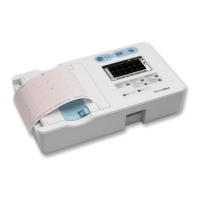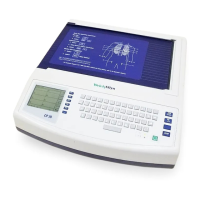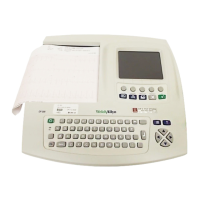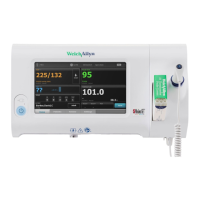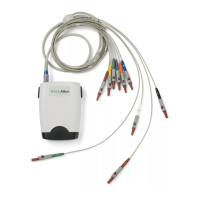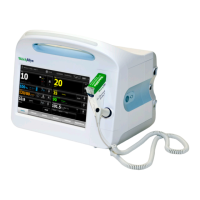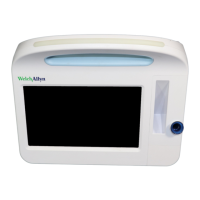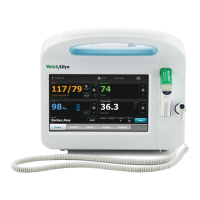4 Safety Summary CP 100 and CP 200 Electrocardiograph
Servicing the Electrocardiograph Safely
Before using or servicing the electrocardiograph, you must read and understand the
following safety-related information.
General Warnings
The following warning statements apply to electrocardiograph use in general. Warning
statements that apply specifically to particular procedures, such as connecting the patient
cable or performing an ECG test, appear in the corresponding sections of the manual.
Warning statements indicate conditions or practices that could lead to illness, injury, or
death.
Warnings Related to the Environment
WARNING To avoid a possible explosion, do not use the electrocardiograph in
the presence of flammable anesthetics.
WARNING When transporting the electrocardiograph on a cart, tuck the
patient cable away from the wheels so that it does not present a hazard.
WARNING Do not use the CP 100 and CP 200 Electrocardiograph in an MRI
suite or hyperbaric chamber.
WARNING Do not autoclave the CP 100 and CP 200 Electrocardiograph or
patient cable.
Warnings Related to Accessories and Other Equipment
WARNING For operator and patient safety, peripheral equipment and
accessories that can come in direct patient contact must be in compliance with
all appropriate safety, EMC, and regulatory requirements. See “EMC Guidance
and Manufacturer’s Declarations” on page 79
WARNING All signal input and output (I/O) connectors are intended for
connection of only devices complying with IEC 60601-1, or other IEC standards
(for example, IEC 60950), as appropriate to the device. Connecting additional
devices to the electrocardiograph may increase chassis or patient leakage
currents. To maintain operator and patient safety, consider the requirements of
IEC 60601-1-1. Measure the leakage currents to confirm that no electric shock
hazard exists.
WARNING The electrocardiograph has not been designed for use with high-
frequency (HF) surgical equipment and does not protect against hazards to the
patient.

